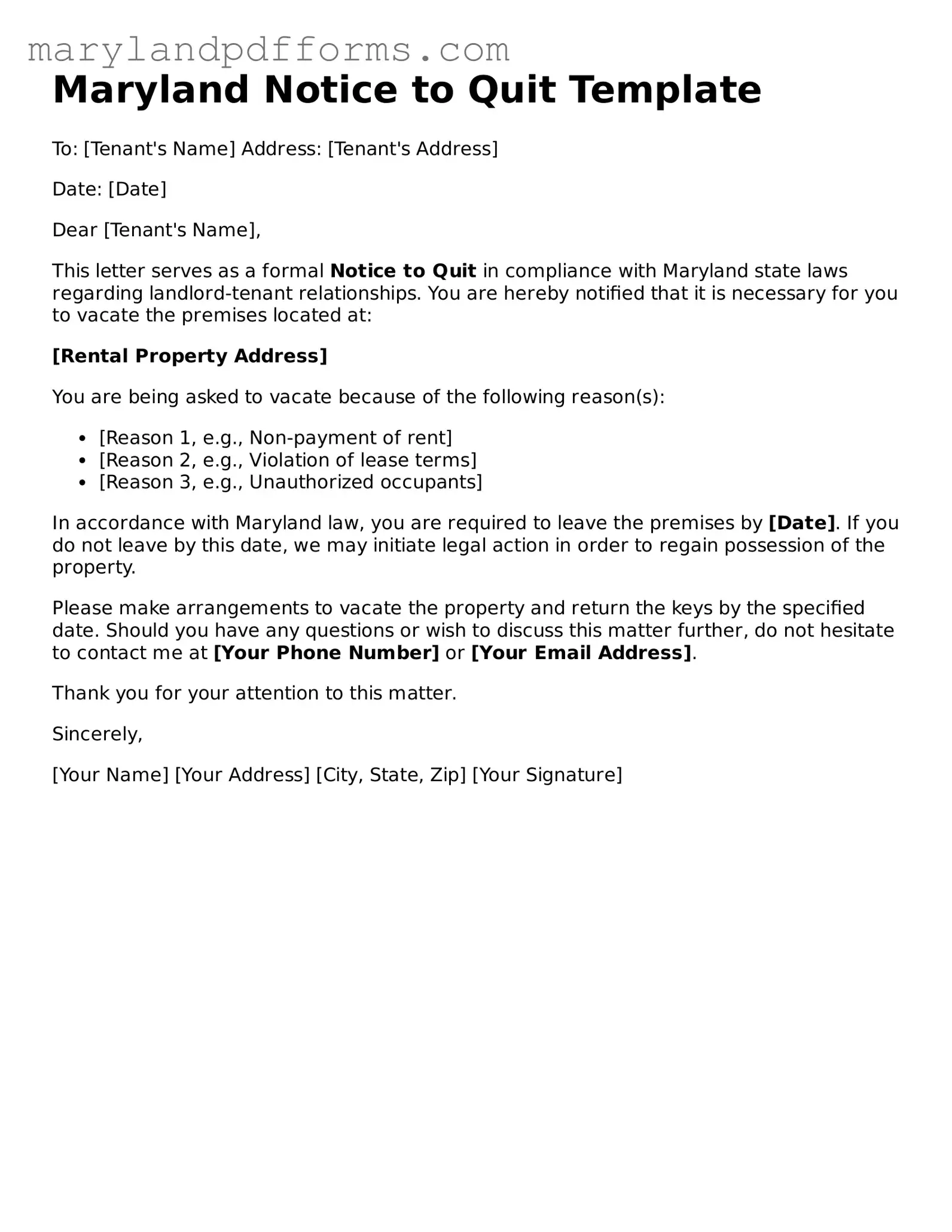What is a Maryland Notice to Quit?
A Maryland Notice to Quit is a formal document that a landlord uses to inform a tenant that they must vacate the rental property. This notice is typically issued when a tenant has violated the lease agreement or has not paid rent. It serves as the first step in the eviction process.
When should a landlord use a Notice to Quit?
A landlord may use a Notice to Quit in several situations, including:
-
Non-payment of rent
-
Lease violations, such as unauthorized pets or subletting
-
End of lease term without renewal
It’s essential for the landlord to provide a valid reason for the notice to ensure it complies with Maryland law.
How long does a tenant have to respond to a Notice to Quit?
The response time depends on the reason for the notice. For non-payment of rent, tenants typically have 10 days to pay the overdue rent or vacate the property. For other lease violations, the notice period may vary, but it is generally 30 days. Always check the specific terms outlined in the notice.
Is a Notice to Quit the same as an eviction notice?
No, a Notice to Quit is not the same as an eviction notice. The Notice to Quit is a preliminary step that informs the tenant of the need to leave the property. If the tenant does not comply, the landlord may then proceed with filing for eviction in court.
Can a tenant contest a Notice to Quit?
Yes, a tenant can contest a Notice to Quit. If a tenant believes the notice is unjust or that they have rectified the issue (such as paying overdue rent), they can respond to the landlord. If the matter escalates to court, the tenant can present their case to a judge.
A Maryland Notice to Quit should include the following information:
-
The date the notice is issued
-
The tenant's name and address
-
The reason for the notice
-
The date by which the tenant must vacate
-
The landlord's name and contact information
Providing clear and complete information helps avoid confusion and potential disputes.
What happens if a tenant ignores the Notice to Quit?
If a tenant ignores the Notice to Quit, the landlord may proceed with legal action to evict the tenant. This typically involves filing an eviction lawsuit in the local court. The court will then schedule a hearing where both parties can present their case.
Can a tenant be evicted without a Notice to Quit?
In Maryland, a landlord cannot evict a tenant without first providing a Notice to Quit, except in certain emergency situations. Following the proper legal process is crucial to ensure the eviction is lawful and enforceable.
A Maryland Notice to Quit form can be obtained from various sources, including:
-
Local court websites
-
Legal aid organizations
-
Online legal document services
Ensure that the form you use is up-to-date and complies with Maryland state laws.
